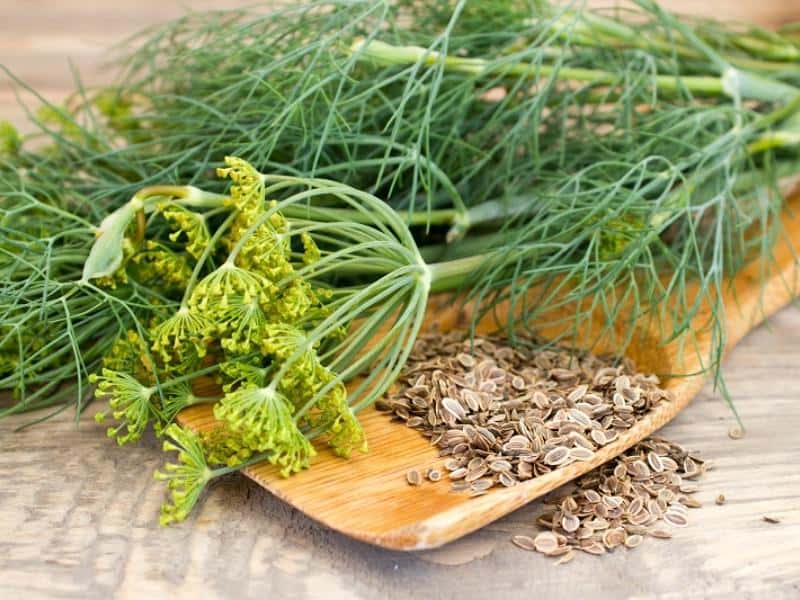Dill Weed: A Culinary Deep Dive

Dill Weed: A Culinary Deep Dive. Discover more detailed and exciting information on our website. Click the link below to start your adventure: Visit Best Website. Don't miss out!
Table of Contents
Dill Weed: A Culinary Deep Dive into This Versatile Herb
Dill, with its feathery foliage and bright, slightly citrusy flavor, is far more than just a garnish. This culinary chameleon, often referred to as dill weed to distinguish the leafy part from the seeds, plays a starring role in countless dishes worldwide. From classic potato salads to vibrant fish dishes, dill's unique flavor profile adds a touch of sophistication and freshness. This deep dive explores the versatility of dill weed, its culinary applications, and how to best utilize this amazing herb in your kitchen.
What is Dill Weed?
Dill weed refers specifically to the leaves of the Anethum graveolens plant. It's an annual herb belonging to the parsley family, easily recognizable by its delicate, lacy, and bright green leaves. While dill seeds also possess a distinct flavor, often described as more pungent and slightly bitter, dill weed offers a milder, more refreshing taste. The subtle anise notes make it a perfect complement to a wide array of cuisines.
Culinary Uses of Dill Weed: A World of Flavor
Dill weed's culinary versatility is truly remarkable. Its fresh, slightly sweet, and tangy flavor makes it an excellent addition to:
- Salads and Dressings: Dill adds a vibrant, herbaceous lift to potato salads, green salads, and even fruit salads. It pairs beautifully with creamy dressings, offering a delightful counterpoint to richness.
- Fish Dishes: Dill is a classic companion to fish, particularly salmon, cod, and trout. Its bright flavor cuts through the richness of the fish, creating a balanced and flavorful dish. Try adding it to baked, grilled, or pan-fried fish.
- Soups and Stews: A sprinkle of fresh dill weed brightens up creamy soups, such as potato leek soup or cream of mushroom, adding a welcome layer of flavor. It also works well in lighter vegetable-based broths.
- Dips and Spreads: Dill weed is a key ingredient in many popular dips and spreads, including tzatziki (a Greek yogurt dip) and various creamy herb dips.
- Egg Dishes: Scrambled eggs, omelets, and frittatas are all elevated by the addition of fresh dill weed. Its fresh flavor adds a touch of elegance to these simple dishes.
- Pickles: Dill is the star ingredient in many dill pickle recipes, providing the characteristic flavor that we all know and love.
Choosing and Storing Dill Weed for Optimal Freshness
For the best flavor, always opt for fresh dill weed whenever possible. Look for bright green, vibrant sprigs with no signs of wilting or yellowing.
Storage Tips for Maximum Freshness:
- Refrigeration: Store fresh dill weed in a plastic bag or airtight container in the refrigerator. To keep it even fresher, wrap the base of the stems in a damp paper towel.
- Freezing: You can also freeze dill weed. Finely chop the leaves and store them in freezer-safe bags or containers.
Dill Weed vs. Dill Seed: Understanding the Difference
While both dill weed and dill seeds come from the same plant, they offer distinct flavor profiles. Dill weed provides a fresher, brighter, and more delicate flavor, while dill seeds offer a more pronounced, slightly bitter, and pungent taste. Both can be used in cooking, but the choice depends on the desired flavor intensity.
Beyond the Kitchen: Dill Weed's Other Uses
Beyond its culinary applications, dill weed has also been traditionally used for its potential health benefits. While more research is needed, some believe it may aid digestion and offer antioxidant properties. However, always consult a healthcare professional before using herbs for medicinal purposes.
Ready to elevate your dishes with the delightful flavor of dill weed? Share your favorite dill recipes in the comments below!

Thank you for visiting our website wich cover about Dill Weed: A Culinary Deep Dive. We hope the information provided has been useful to you. Feel free to contact us if you have any questions or need further assistance. See you next time and dont miss to bookmark.
Featured Posts
-
 Isaiah Mobleys Post College Basketball Future Where Will He Land
Feb 05, 2025
Isaiah Mobleys Post College Basketball Future Where Will He Land
Feb 05, 2025 -
 Olanzapine Uses In Psychiatry Current Clinical Applications
Feb 05, 2025
Olanzapine Uses In Psychiatry Current Clinical Applications
Feb 05, 2025 -
 Jack Nicholsons Most Iconic Roles A Career Retrospective
Feb 05, 2025
Jack Nicholsons Most Iconic Roles A Career Retrospective
Feb 05, 2025 -
 Cannes 2025 Juliette Binoche A La Tete Du Jury
Feb 05, 2025
Cannes 2025 Juliette Binoche A La Tete Du Jury
Feb 05, 2025 -
 How To Fix The Naistyles Csv Missing File Issue
Feb 05, 2025
How To Fix The Naistyles Csv Missing File Issue
Feb 05, 2025
